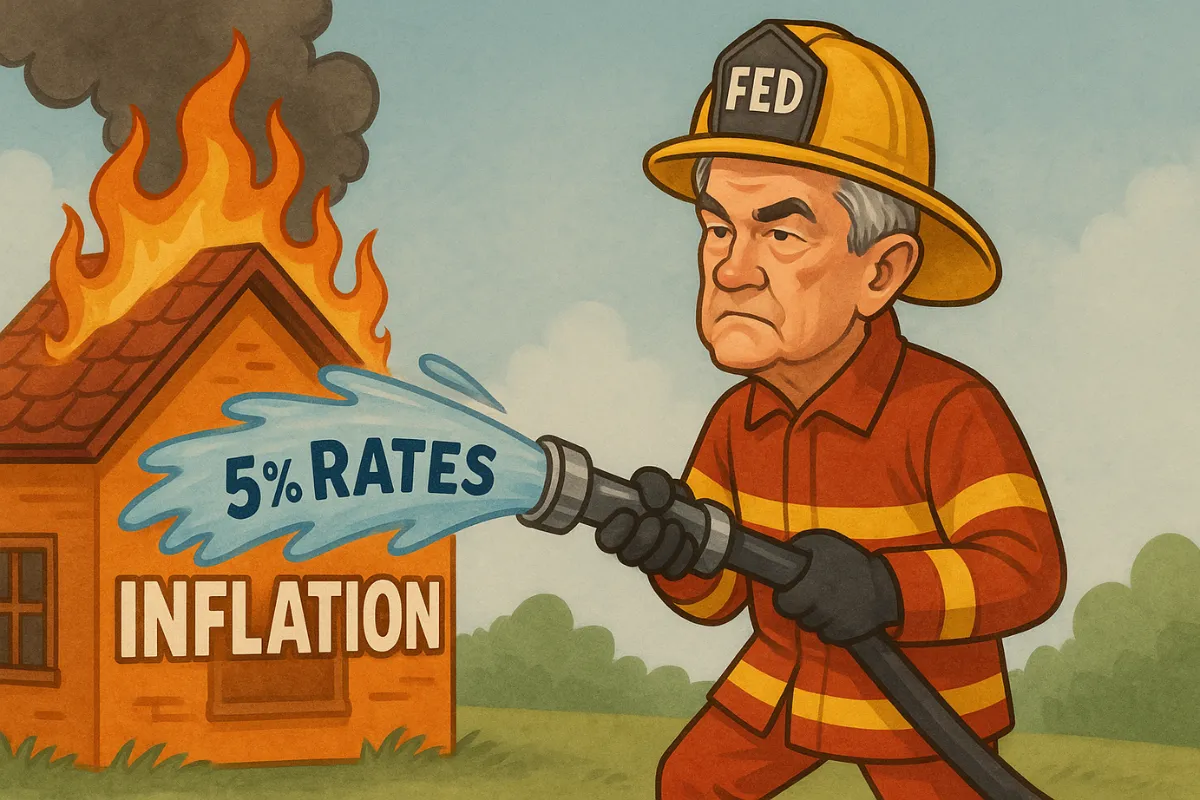BLOG

Inflation and the Future of Prices
In 2022, the Federal Reserve was hyper-focused on the rapidly rising costs of goods and services. After trillions of dollars were floated into the economy in the years following 2020 to augment the impact of government policies on corporate America, the availability of goods did not keep pace with demand. The result? Hyperinflation. By the end of 2021, the Consumer Price Index (CPI) was on its way to over 10% annual increases that have not been experienced since late 1979.
The Federal Open Market Committee (FOMC) took action to control inflation with an aggressive interest rate hike campaign announced by Jerome Powell, Federal Reserve Chairman, in March 2022. Although the FOMC was criticized for not making the move quicker, the campaign had an immediate impact on inflation. The FOMC approved 11 consecutive rate hikes in 16 months (FOMC does not meet every month) that raised the Federal Discount rate from 0% - 0.25% to 5.25% - 5.5%. Over 2200% increase!
The rapid rise of interest rates causes significant changes in lending activity especially in the housing mortgage market to this day. According to CNBC, the sale of previously owned homes in April 2025 declined 0.5% from March 2025 to an annualized rate of 4 million units. This is the slowest April pace since 2009.
According to the Bureau of Labor Statistics, since January 2023, the CPI has had a cumulative increase of 7.45% or about 2.98% annualized rate. Expressed in dollars, the cost of $1,000 goods in January 2023 now costs $1,074.50. Since January 2025, the annualized pace of CPI has slowed even further to 2.85%.
Many analysts expressed their fears that the Feds were hiking rates too fast and may drive the economy into a recession. The US stock market plummeted in 2022 as investors drank the Kool-Aid of dire projections and sold their stock portfolios.
However, investors and analysts now sing the praise of the FOMC for their accurate assessment of the US economy and the execution of their rate hike campaign. Since 2023, the stock market has rebounded, and the annual rise of the CPI has slowed below 3%. All would be well until President Trump rained on the party. The shock to the world came on April 2 when President Trump announced massive changes in tariff policies on an astonishing 90 trading countries. The impact proposal had an immediate impact on panicking investors that caused a tsunami of sales and CEO’s across the world to reassess their cost matrix with their business. April, being an earnings reporting month, prompts many CEOs to withhold sales and profit forecasts during their shareholder calls citing the uncertainty of the cost of goods due to tariffs.
Since April 2, the Trump administration has capitulated on the effective date of tariff hikes and according to the Administration has now secured new tariff agreements with many of these countries. However, the concern is to what extent will US inflation be impacted by the short but dramatic interruption of supplies.
To determine the future of rising prices, we will be monitoring new reports from the Bureau of Labor Statistics along with reports from the FOMC. A factor that may impact prices for consumers will be the cost of imports into the US. Last week the Bureau of Labor Statistics released the May Import and Export Prices reports. Below is the chart illustrating the All Imports (red line), Fuel Imports (light blue line), and Nonfuel Imports (dark blue line).

The Bureau stated the following in this month’s report:
“Prices for U.S. imports were unchanged in May following an advance of 0.1 percent in April and a decrease of 0.4 percent in March. The price index for U.S. imports rose 0.2 percent from May 2024 to May 2025.”
Since imports of merchandise take weeks to appear on the retail store shelves, this would indicate that prices for the near term may remain stable. However, I have observed on many occasions businesses raising prices simply because the common perception is that prices are rising. I have observed this, particularly with rising gas prices at the pumps due to the perception that wholesale West Texas Crude prices are stable or even declining.
We also monitor exports even though the goods are being shipped to other countries. The purpose of watching export prices is twofold. First, some of the raw goods the US ships out come back to the US as finished products. If export prices rise, then there is the possibility that prices for some imports will also rise. Second, if exporter profits decline due to higher costs or tariffs the same companies may need to raise their domestic prices to cover declining export profits.
Below is the chart highlighting the prices of All Exports (green line), Agricultural Exports (light blue line), and Nonagricultural Exports (black line). Since May 2024 after a dramatic decline in export prices, prices have been slowly recovering.

The Bureau stated the following in this month’s exports:
“Prices for U.S. exports decreased 0.9 percent in May, the largest 1-month decline since a 0.9-percent drop in October 2023. Lower prices for nonagricultural exports more than offset higher prices for agricultural exports. Despite the May decline, U.S. export prices increased 1.7 percent from May 2024 to May 2025.”
What Does This Mean to Me?
Investors have focused on inflation and the CPI for two key reasons. First, if the CPI develops a rising trend and crosses above 3%, the FOMC may approve one or more rate increases. Rising interest rates will lower bond prices and potentially lower corporate profits due to higher loan costs. Investors reacted quickly in 2022 and would probably respond the same if the Feds started raising rates.
However, the consensus is inflation represented by the CPI at 2.8% is stable. Although the CPI is above the FOMC target annualized rate of 2%, the committee members have not indicated an interest in raising the discount rate. President Trump has been strongly advocating for Jerome Powell to lead the committee in lowering rates. Therefore, at this time investors do not seem concerned about rising interest rates.
One asset class that does benefit from higher inflation is metals and commodities. Precious metals such as gold, silver, platinum, copper, etc, have had a terrific rally the past year along with miners. Stable interest rates may not necessarily slow the rise of precious metals and commodities if concerns about other contributory issues develop such as war, political instability, and recession fears.
Therefore, the current stability of inflation and interest rates prompts us to maintain our favorable view of the US economy and stock market.
Let us know if you have any questions about this UPdate or your own investment strategy. We welcome the opportunity to help you, and your family achieve your goals.
CONTACT
Check the background of your financial professional on FINRA's BrokerCheck.
The content is developed from sources believed to be providing accurate information. The information in this material is not intended as tax or legal advice. Please consult legal or tax professionals for specific information regarding your individual situation. The opinions expressed and material provided are for general information, and should not be considered a solicitation for the purchase or sale of any security.
We take protecting your data and privacy very seriously. As of January 1, 2020 the California Consumer Privacy Act (CCPA) suggests the following link as an extra measure to safeguard your data: Do not sell my personal information.
The information on this website is the opinion of Up Capital Management and does not constitute investment advice or an offer to invest or to provide management services. Before purchasing any investment, a prospective investor should consult with its own investment, accounting, legal, and tax advisers to evaluate independently the risks, consequences, and suitability of any investment.
Copyright 2024 | Privacy Policy | Terms & Conditions

